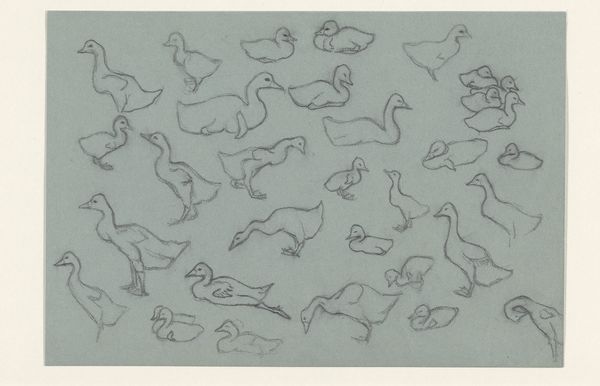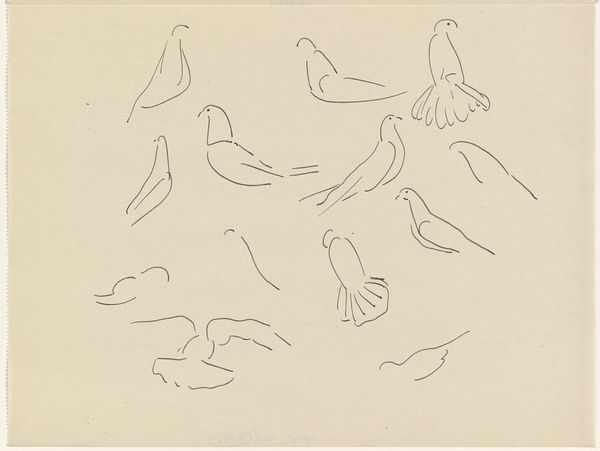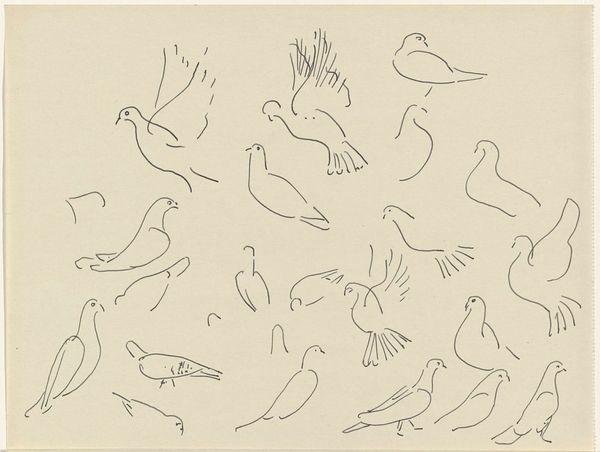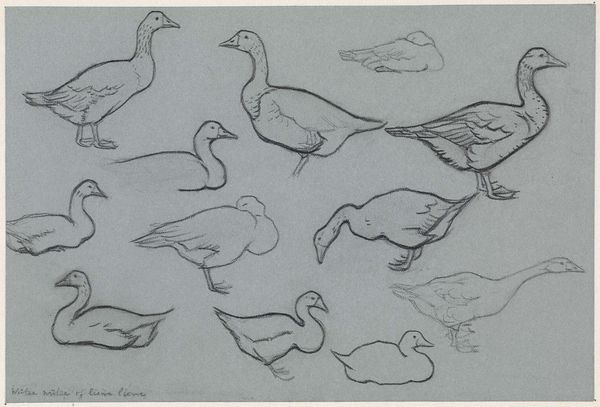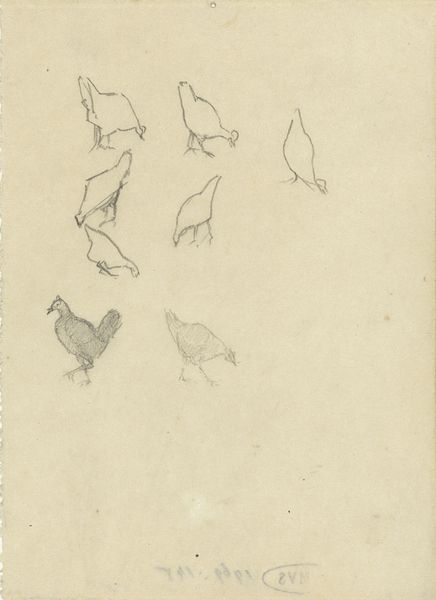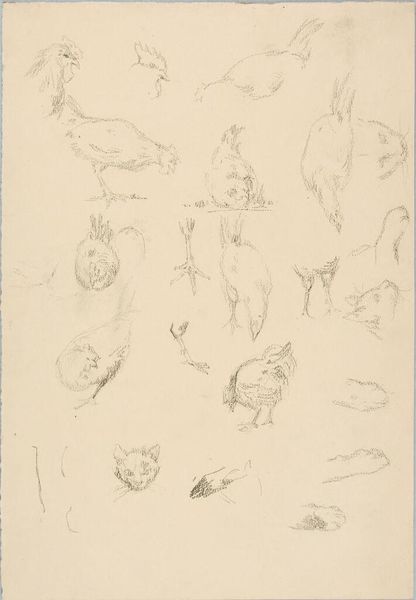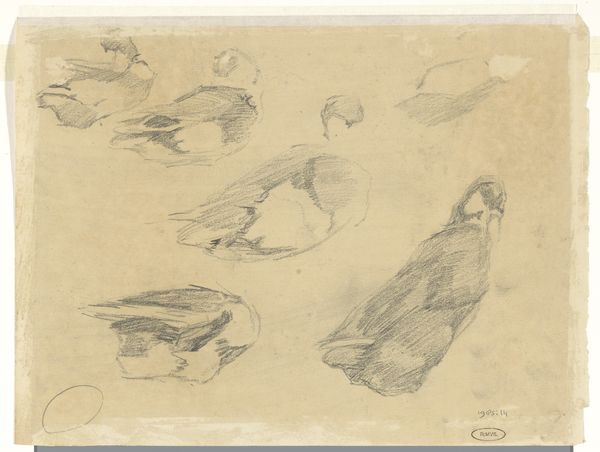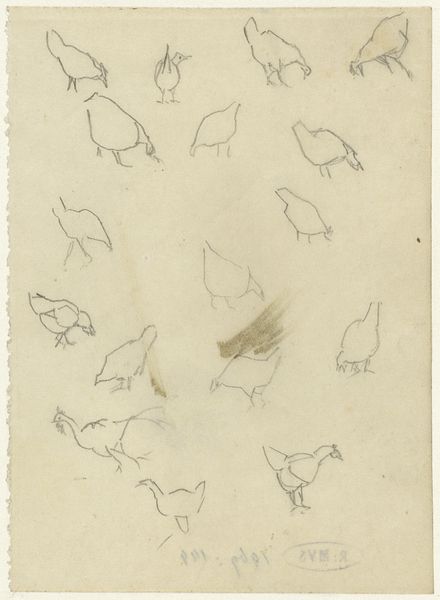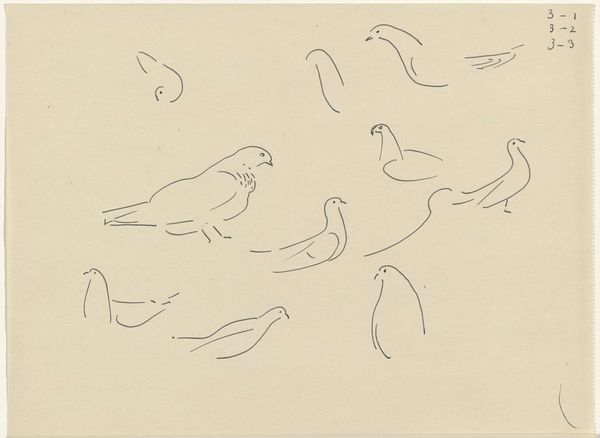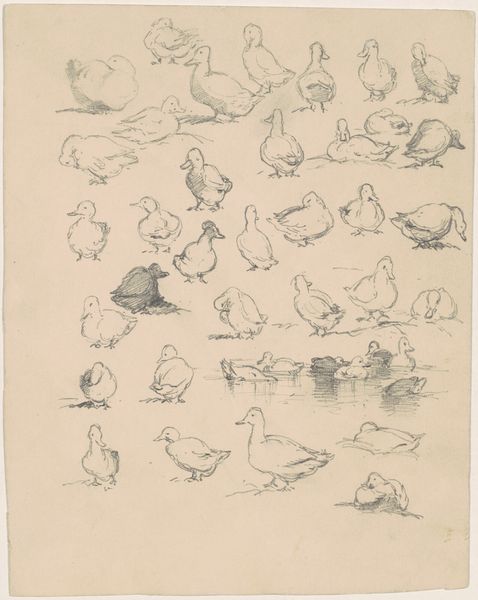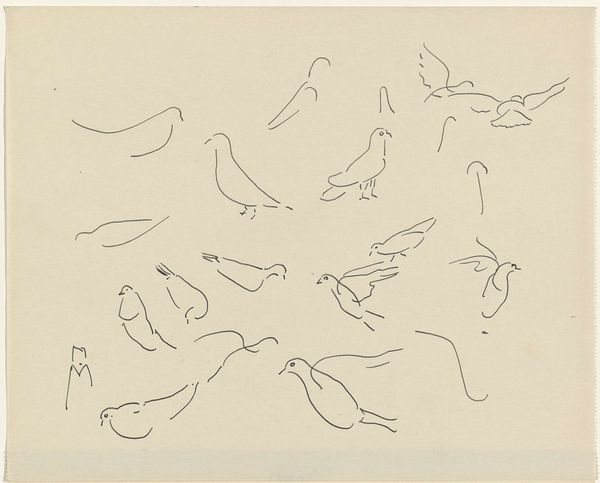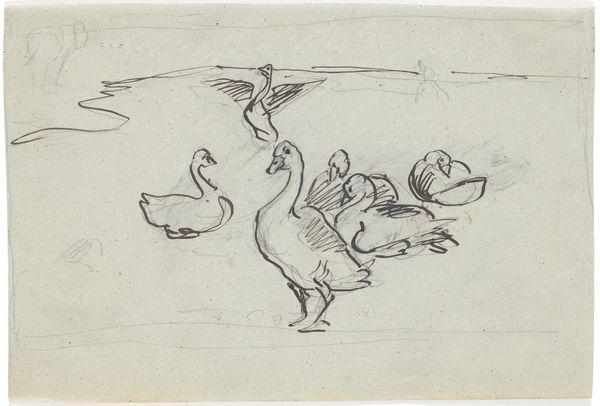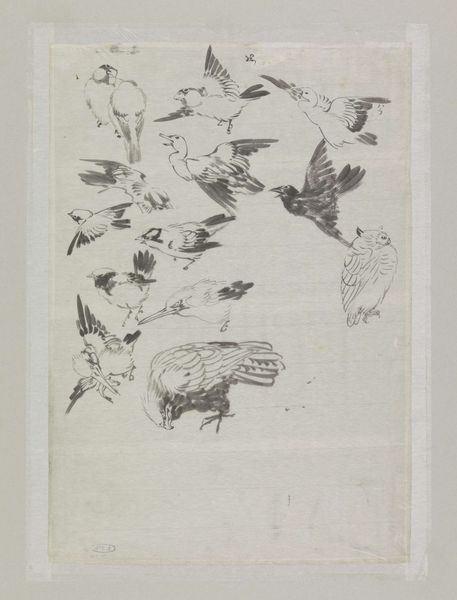
drawing, pencil
#
drawing
#
animal
#
landscape
#
figuration
#
pencil
#
sketchbook drawing
Dimensions: height 157 mm, width 229 mm
Copyright: Rijks Museum: Open Domain
Editor: This is "Studieblad met hoenders," a pencil drawing of chickens by Julie de Graag, sometime between 1887 and 1924, and held at the Rijksmuseum. The simple line work and the close observation of these birds—they feel very alive. What can you tell me about it? Curator: This drawing opens up questions of artistic representation and the rural ideal. The chicken, seemingly innocuous, becomes a site of complex social and economic negotiations. De Graag's sketches weren't merely studies of form, but an exploration of the roles these animals played within the domestic sphere. How might we view this through a feminist lens, given women’s historical association with the domestic sphere and animal care? Editor: That's a perspective I hadn't considered. It shifts the focus away from simply appreciating the artist's skill to thinking about the historical context of women and farm life. Are you suggesting that these chickens become a symbol of something larger? Curator: Precisely. Think about the broader historical context: the rise of industrialization, shifts in agricultural labor, and the changing roles of women. By observing these "ordinary" animals, de Graag may be subtly commenting on these transformations and their impact on society. What might it mean to draw the domestic, when the world moved ever away from that space? Editor: So, the artwork can be understood as participating in a dialogue about social change, with these sketches of chickens acting as a kind of quiet commentary? Curator: Yes, exactly! By studying these creatures, we uncover layers of meaning relating to gender roles, economic shifts, and the value of domestic life. It makes one wonder: are these drawings really about chickens, or are the chickens standing in for other pressing societal matters? Editor: I'm struck by how much richer the artwork becomes when considered within this socio-historical framework. It prompts reflection on labor, gender, and social status. Curator: And that's the power of art history—illuminating these conversations through unexpected subjects and lines.
Comments
No comments
Be the first to comment and join the conversation on the ultimate creative platform.
